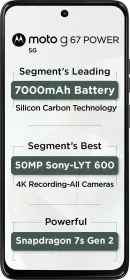Despite Maruti Suzuki and Hyundai doing well in the Indian car market, two Indian companies are improving their game with every launch: Mahindra and Tata Motors. After being on the back seat for a couple of years, both these companies have introduced modern designs and tech-loaded cabins, with varied engine options, giving buyers the flexibility to choose the car that best fits their requirements and budget.
Also Read: MG Windsor Inspire Edition First Impressions – Looks Better In Person!
What Makes Creta The Segment Leader?

However, both Indian automakers lack something in their lineup: a competitor in the segment ruled by vehicles like the Hyundai Creta. Take October 2025 car sales in India as an example. Out of the top five best-selling cars in the country, there’s only one C-segment SUV, the Hyundai Creta (sold over 18,000 units in October 2025).
In fact, the Korean SUV has been among the best-selling models for the last six months, and for good reasons no less.
- A wide range of powertrains (petrol, diesel, turbo-petrol, and EV) appeals to a diverse buyer base.
- The car delivers segment-leading features, even in lower variants, including a sunroof, a large touchscreen infotainment system, ventilated seats, wireless charging, and advanced car connectivity.
- A fresh, stylish exterior with premium touches keeps the Creta desirable to a broad customer base.
- The brand’s reliability ensures the Creta holds its value over time. Low maintenance costs and a widespread service network boost confidence among buyers.
According to a recent report, Hyundai has sold 99,335 units between April and September 2025, making up over 50% of the company’s SUV sales in India. Add the 18,381 units sold in October, and the company has already achieved a phenomenal total of 117,716 Creta units sold by October 2025.

Also Read: 2025 MG ZS EV Review: Most Under-Rated Electric SUV?
Given that the average ex-showroom price of the vehicle ranges between Rs. 11 lakh and 20 lakh, depending on the variant, assuming a conservative average ex-showroom price of Rs. 14-15 lakh per unit, the domestic revenue from April to October 2025 would be around Rs. 16,000 to Rs. 17,500 crores. We’re not accounting for the exports and after-sales revenue.
It’s clear that the Indian automakers wish to have a share of this market from Hyundai. Most recently, Tata Motors launched its Creta-rival SUV, the Sierra 2025, in India. It offers similar dimensions, an upright road presence, powerful powertrains, and a tech-loaded cabin, qualities that will place the vehicle as Tata’s closest rival to the Creta.
Mahindra Could Also Launch Its XUV 5XO To Rival The Hyundai Creta
Nomenclature
Given that Tata Motors has already unveiled its Sierra, the Creta rival, Mahindra wouldn’t want to run behind in the race. Hence, there’s speculation around the company working on the XUV 5XO. It is envisioned as a five-seater SUV (rather than the seven-seater XUV 500), and it is likely part of the automaker’s new naming strategy, which includes the XUV 1XO, 3XO (already available in the market), 5XO, and 7XO.
In comparison, the Tata Sierra emphasizes design heritage and rugged character.
Platform
The purported Mahindra XUV 5XO could be based on the NU_IQ platform. It supports both internal combustion engine (ICE) and electric powertrains. It’s expected to follow a contemporary, aggressive design language, possibly borrowing cues from the Vision X concept SUV, with little to no resemblance to the older XUV 500.
Among the key features of the Mahindra XUV 5XO could include triple-integrated displays (similar to the XEV 9e and the Tata Sierra). Additionally, the vehicle could also feature a panoramic sunroof, ADAS, multi-zone climate control, and a handful of safety features, including multiple airbags and a 360-degree camera setup.
The Tata Sierra, on the other hand, positions itself with a slightly different cabin experience: more minimalist and design-focused, yet still feature-loaded. Its large panoramic sunroof, airy cabin layout, and clean dashboard design cater to buyers who appreciate a more premium, lounge-like interior.
Also Read: Indians Have Never Bought More Cars Before: Key Highlights from October 2025 Car Sales
Features

Most recently, the Sierra debuted with all these features, including what Tata claims is the largest panoramic sunroof in the segment. Hence, Mahindra will either have to match them or add more features to the XUV 5XO to make it more appealing than the Sierra and the Creta.
Where the Tata Sierra focuses on delivering balanced performance through familiar petrol and diesel options, Mahindra is expected to push the envelope with more powerful TGDi and diesel engines.
Powertrains
Regarding powertrain, the proposed XUV 5XO could feature a 1.2-liter turbocharged TGDi petrol engine and a 1.5-liter diesel engine. For those catching up, these are the most powerful engines in the sub-4 meter SUV segment, currently powering the XUV 3XO. The carmaker could offer the larger 2.0-liter TGDi petrol or 2.2-liter diesel powertrain for the top variants.
Moreover, the Tata Sierra and Mahindra XUV 5XO will approach the Creta-dominated segment with different approaches: Sierra with its nostalgia-driven design and premium feel, and XUV 5XO with modern looks, sophisticated tech, and powerful drivetrains.
Availability
The newly-announced Tata Sierra will also offer multiple engine options, including petrol and diesel powertrains mated with different transmissions. While Mahindra might reveal the XUV 5XO after the Tata Sierra enters the market in late November, nothing can be said with certainty at the moment. Keep in mind that information about the Mahindra XUV 5XO may change over time, as the vehicle is still under development.
Also Read: Hyundai Venue First Impressions: Improvements All Around

You can follow Smartprix on Twitter, Facebook, Instagram, and Google News. Visit smartprix.com for the latest tech and auto news, reviews, and guides.


































